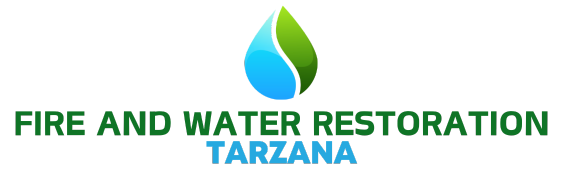Your home’s foundation may be upended by an unexpected fire or water damage, which can leave you feeling confused and chaotic. However, you can retake control and speed up the rehabilitation process by comprehending and putting into practice an organised method. In order to ensure a safer, more effective, and ultimately more empowered recovery, this book offers a road map for handling fire and water damage.
Secure Safety and Prevent Further Intrusion
Your immediate priority is the safety of everyone within the home. Evacuate without hesitation if fire persists or if water damage compromises structural stability. Once safety is confirmed, act decisively to limit further damage. For water incidents, shut off the main water supply to halt the flow. In fire scenarios, if safe, disconnect electrical power to the affected area to mitigate hazards.
Document for Empowerment: Building Your Case
Comprehensive documentation is your ally in navigating the insurance claim and restoration journey. Before any cleanup begins, meticulously record the damage with photographs and videos. Capture every affected area, noting structural damage, water lines, soot patterns, and damaged belongings. This visual record empowers you by providing concrete evidence for your insurance company and aiding restoration professionals in accurate assessment. Retain all damaged items and debris until documented; this is your evidence.
Initiate Communication: Engage Your Insurance Partner
Contact your insurance company immediately to initiate the claims process. Provide a detailed account of the damage and inquire about required documentation. Understand your policy coverage and explore options for temporary housing or living expenses if necessary. Your insurance company is your partner in this process; they will likely dispatch an adjuster to evaluate the damage and provide a repair estimate.
Leverage Expertise: Partner with Restoration Professionals
While DIY efforts may seem appealing, professional restoration services are essential for a comprehensive and efficient recovery. These experts bring specialized equipment, training, and experience to address hidden issues like mold, structural damage, and toxic fumes. Their expertise ensures proper drying, cleaning, and sanitization, minimizing long-term complications and empowering you with peace of mind.
Conquer Water Damage: Safeguarding Against Mold and Structural Decay
Address water damage promptly to prevent mold and structural issues. Remove standing water using pumps or wet vacuums. Thoroughly dry affected areas with dehumidifiers and fans. Remove wet carpets, upholstery, and porous materials that can harbor mold. Inspect walls, floors, and ceilings for hidden moisture and address damp areas to prevent mold proliferation.
Reclaim from Fire Damage: Eliminating Soot and Smoke Contamination
Fire damage leaves behind soot and smoke residue that can contaminate surfaces and compromise air quality. Wear protective gear, including masks, gloves, and eye protection, during cleanup. Ventilate the affected area to remove smoke and odors. Use specialized cleaning products designed for soot and smoke removal. Clean and sanitize all surfaces, including walls, ceilings, furniture, and belongings.
Restore Structural Integrity: Rebuilding Your Foundation
Evaluate the structural integrity of your home after fire or water damage. Repair or replace damaged structural components, such as walls, floors, and ceilings. Ensure all repairs comply with building codes and safety standards. Consider hiring a licensed contractor for major structural repairs to ensure proper execution.
Fortify Your Home: Implementing Preventive Measures
After restoration, implement preventive measures to minimize future risks. Install smoke detectors and fire extinguishers to enhance fire safety. Install water leak detectors and sump pumps to prevent water damage. Regularly inspect plumbing and roofing for potential leaks. Maintain proper ventilation in bathrooms and kitchens to prevent moisture buildup.
Rebuild Your Belongings: Restoring Personal Treasures
Create an inventory of damaged belongings for insurance purposes. Clean and restore salvageable items and replace unsalvageable ones. Consider hiring a professional cleaning service for delicate or sentimental belongings.
Maintain Detailed Records: Your Roadmap to Recovery
Keep detailed records of all restoration services, receipts, and communication with your insurance company. This documentation is your roadmap to reimbursement and future reference, ensuring a smooth and organized recovery.
Although recovering after fire or water damage is a difficult process, you can regain your home and your peace of mind by adopting a proactive and empowered attitude. To guarantee a successful and empowered recovery, put safety first, take advantage of professional assistance, document extensively, and keep careful records.
